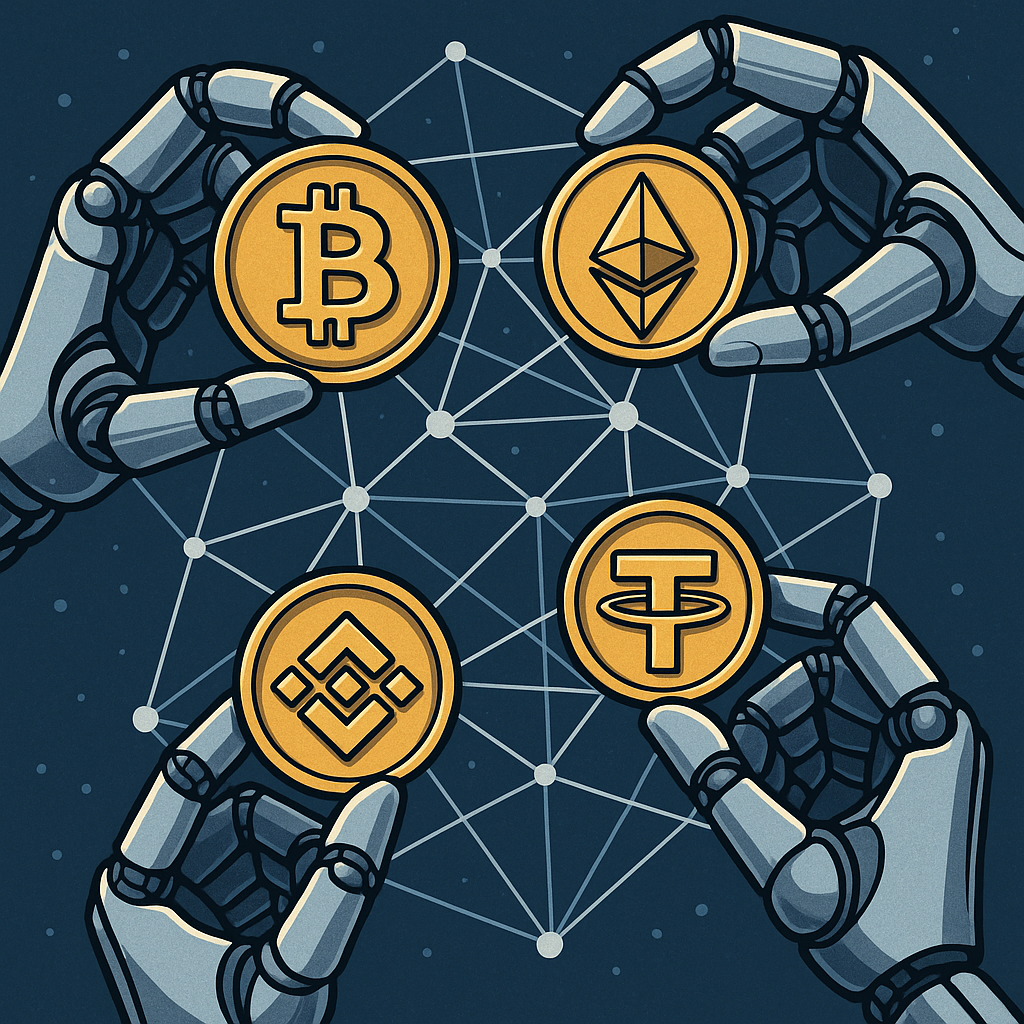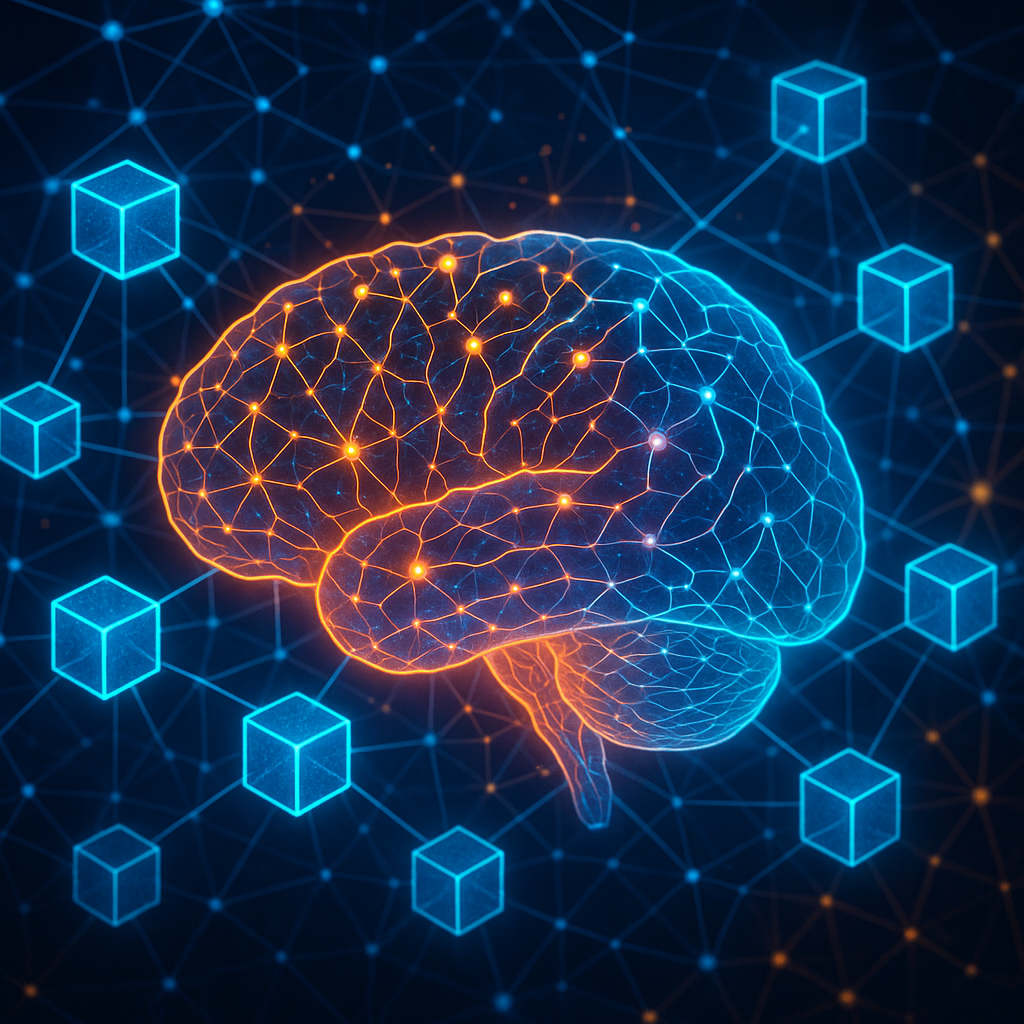The artificial intelligence revolution is fundamentally reshaping our world, but it’s taking an unexpected turn that challenges the dominance of tech giants. While companies like OpenAI and Google capture headlines with their centralized systems, Bittensor is quietly building something far more revolutionary: the world’s first truly decentralized AI network. This isn’t just another blockchain project—it’s a paradigm shift that could democratize artificial intelligence and transform how we think about machine learning, data ownership, and innovation itself.
Understanding the Crisis of Centralized AI
The current AI landscape represents one of the most concerning concentrations of power in technological history. Over 80% of AI systems are currently controlled by just a handful of tech giants, creating unprecedented bottlenecks that threaten innovation, privacy, and fair access to transformative technology.
This centralization manifests in several critical problems. Data monopolies have emerged where companies like Google and Meta harvest vast amounts of personal information without fair compensation, using this data to train increasingly powerful systems that further entrench their dominance. The lack of transparency means users have no understanding of how AI decisions are made or what biases might influence these systems. Meanwhile, the astronomical costs of building competitive AI—requiring billions in investment and massive computing resources—effectively lock out smaller innovators, researchers, and entire regions from participating in AI development.
Perhaps most troubling is the censorship risk inherent in centralized systems, where a few corporate entities can determine what topics AI systems will address and how they will respond. This concentration of control over humanity’s most powerful technology creates systemic vulnerabilities that extend far beyond technical concerns into questions of democratic governance and human autonomy.
Bittensor: The Internet of Intelligence
Bittensor fundamentally reimagines AI as a collaborative, open ecosystem rather than a corporate-controlled resource. At its core, the network operates as a decentralized protocol that connects AI models globally, allowing them to compete, collaborate, and learn from each other while fairly rewarding contributors with TAO tokens.
The architecture centers around specialized “subnets”—think of them as AI departments, each focusing on specific tasks and applications. Currently operating over 118 active subnets following the Dynamic TAO upgrade, these specialized networks handle everything from natural language processing and image generation to complex scientific research like protein folding and financial modeling. Each subnet operates as its own competitive marketplace where quality determines rewards, driving continuous innovation and improvement.
The network’s participants include miners who contribute AI models and computing power, validators who evaluate and rank contributions, subnet owners who create new specialized markets, and users who access AI services. This creates a self-sustaining ecosystem where merit-based competition ensures the best AI solutions rise to the top while contributors earn proportional rewards.
The TAO Token: Digital Infrastructure for AI’s Future

TAO serves as much more than a typical cryptocurrency—it’s the foundational infrastructure enabling decentralized AI to function. With a capped supply of 21 million tokens mirroring Bitcoin’s scarcity model, TAO has built-in deflationary characteristics that could drive long-term value appreciation as the network grows.
The token’s utility extends across multiple critical functions within the ecosystem. Network participation requires TAO for registration and staking, creating consistent demand pressure. Users pay TAO to access AI capabilities, while contributors earn tokens based on the quality and utility of their contributions. This creates a true marketplace for machine intelligence where value flows to those providing the most useful AI services.
TAO’s economic model has already demonstrated impressive real-world performance. Launched at $93.40 in March 2023, the token reached an all-time high of $760.18 in April 2024, representing over 700% growth. Current staking yields of approximately 16-19% annually provide attractive returns for token holders while securing the network through aligned incentives.
Real-World Applications Driving Tangible Value
Unlike many blockchain projects that remain theoretical, Bittensor’s subnet ecosystem is already producing measurable value across diverse applications. Subnet 1 competes directly with ChatGPT by providing conversational AI that can debug code, answer questions, and solve complex problems. Subnet 17 creates AI-generated images and 3D content for gaming and design applications, while Subnet 25 has already simulated over 160,000 protein foldings for medical research.
Financial applications are particularly compelling, with Subnet 10 optimizing DeFi yield farming strategies and providing market predictions. Security-focused subnets like Subnet 34 detect deepfakes and AI-generated content to combat misinformation. This diversity demonstrates that decentralized AI isn’t just a theoretical concept—it’s delivering practical solutions across industries today.
The competitive nature of subnets ensures continuous improvement and innovation. Each operates as an independent market where only the highest-performing AI services receive rewards, creating natural quality controls that surpass centralized alternatives in many cases. Some subnets like Chutes already offer services 85% cheaper than AWS, demonstrating the cost advantages of decentralized architecture.
The Investment Thesis: Positioning for AI’s Decentralized Future
The convergence of several powerful trends makes Bittensor’s investment case increasingly compelling. The global AI market is projected to reach $1.3 trillion by 2030, representing a compound annual growth rate exceeding 35%. Bittensor is uniquely positioned to capture a significant portion of this growth by offering a decentralized alternative to expensive, centralized AI services.
Unlike speculative cryptocurrencies, TAO has genuine utility that creates consistent demand. The token is required to access real AI services that businesses and individuals actually use, creating organic demand pressure that increases as the network grows. The limited supply combined with expanding utility creates favorable supply-demand dynamics for long-term appreciation.
Institutional recognition is accelerating, with companies like TAO Synergies purchasing $10 million worth of TAO tokens for their treasury. This institutional adoption validates the network’s potential and suggests growing mainstream acceptance of decentralized AI infrastructure. The network effects become increasingly powerful as more developers build subnets and more users join, creating positive feedback loops that benefit all participants.
Recent market dynamics support this optimistic outlook. TAO is projected to potentially reach $1,000+ by 2025-2026 according to multiple price prediction models, driven by the network’s expanding utility and growing adoption. While cryptocurrency markets remain volatile, TAO’s fundamental value proposition—providing access to decentralized AI infrastructure—offers more sustainable long-term growth potential than purely speculative assets.
The Broader Revolution: Democratizing Intelligence Itself
Bittensor represents something larger than an investment opportunity—it’s a fundamental shift toward democratizing one of humanity’s most powerful technologies. By enabling anyone with computing resources or AI expertise to participate and earn rewards, the network breaks down barriers that have traditionally excluded smaller players from AI development.
The implications extend far beyond technology into questions of human autonomy and democratic governance. A recent Harris poll found that 75% of Americans believe decentralized AI drives more innovation and 71% consider it more secure for personal data. This public sentiment reflects growing awareness that centralized control over AI poses risks to privacy, competition, and innovation.
The philosophical importance cannot be overstated. Just as Bitcoin offered an alternative to centralized banking, Bittensor provides an alternative to corporate-controlled AI that puts power back in the hands of global communities. This shift from extraction-based models—where corporations harvest user data and attention—to contribution-based models where participants are fairly rewarded for their input represents a more sustainable and equitable approach to technological development.
Navigating Risks and Challenges
Like any revolutionary technology, decentralized AI faces significant challenges that potential participants should understand. Technical complexity remains high, requiring considerable knowledge to participate as miners or validators. The regulatory environment remains uncertain, with governments still developing frameworks for both AI and cryptocurrency projects.
Network scalability presents ongoing challenges as the system grows, and maintaining quality standards across a distributed network requires sophisticated consensus mechanisms. Competition from well-funded centralized players with deep resources poses another risk, as does the inherent volatility of cryptocurrency markets.
However, these challenges should be viewed in the context of the enormous opportunity and the network’s demonstrated ability to overcome obstacles. The Dynamic TAO upgrade successfully transitioned the network from centralized to market-driven resource allocation, proving the protocol’s adaptability and community governance capabilities. The growing ecosystem of subnets and increasing institutional interest suggest that market forces are validating the decentralized AI approach despite technical challenges.
The Paradigm Shift: From Extraction to Contribution
What makes Bittensor truly revolutionary is how it fundamentally changes the relationship between users and AI systems. Instead of being passive consumers whose data enriches corporate shareholders, participants become active contributors who are fairly compensated for their input. This shift from an extraction-based economy to a contribution-based economy represents a more sustainable and ethical approach to AI development.
The network’s success demonstrates that decentralized systems can compete with and potentially surpass centralized alternatives in both performance and cost-effectiveness. As more developers recognize the advantages of open, permissionless AI development, and as users demand greater control over their data and AI interactions, Bittensor’s approach becomes increasingly compelling.
The timing appears optimal for this transition. Growing public awareness of AI centralization risks, combined with technological maturity that makes decentralized alternatives viable, creates a unique window for systems like Bittensor to establish themselves as credible alternatives to Big Tech dominance.
Participating in AI’s Democratic Future
Bittensor isn’t just another cryptocurrency project—it’s the foundation for a more open, fair, and innovative AI future. The network has proven that decentralized AI can work at scale, generating real value while fairly rewarding contributors and providing competitive alternatives to centralized systems.
For those seeking exposure to AI’s growth while supporting technological democratization, Bittensor offers a unique opportunity to participate in building the infrastructure for humanity’s AI-powered future. Rather than simply enriching existing tech monopolies, investing in TAO means supporting a system designed to distribute AI’s benefits more broadly while maintaining the quality and innovation that drives progress.
The question isn’t whether AI will continue transforming our world—that transformation is already underway. The question is whether this transformation will be controlled by a few powerful corporations or democratically governed by global communities of contributors. Bittensor represents our opportunity to choose the democratic path, building AI systems that serve everyone rather than extracting value for the few.
The decentralized AI revolution has begun, and Bittensor stands at its forefront. This isn’t just about technology or investment returns—it’s about choosing what kind of future we want to build and ensuring that humanity’s most powerful tools remain in humanity’s hands.
The information presented in this article is for educational purposes only and should not be considered financial advice. Cryptocurrency investments carry significant risks, including the potential for total loss. Always conduct your own research and consult with qualified financial professionals before making investment decisions.



